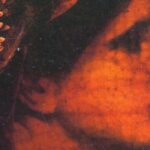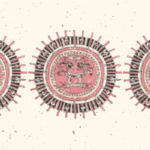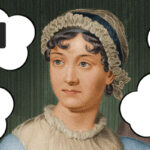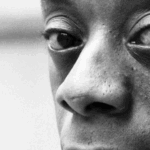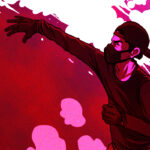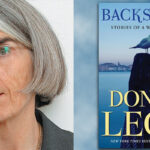When Pen Names Become People
The Freedom and Pitfalls of Literary (Mis)Identity
The list of reasons for why an author might opt to use a pseudonym are virtually limitless. Some writing do so for reasons of privacy, perhaps looking to avoid the prying glances of family members, friends, or co-workers. (Eric Blair’s initial usage of the name George Orwell comes to mind.) Certain authors opt to use another name to write work in a different genre than those for which they are best-known: J.K. Rowling’s books written as Robert Galbraith come to mind, as do John Banville’s crime novels written under the name Benjamin Black. There can be a more problematic side to pseudonyms as well: the recent case of poet Michael Derrick Hudson opting to write under the name Yi-Fen Chou has understandably offended and infuriated many in the literary world, and has revived debates over racial appropriation and identity. In none of these cases, however, did the writers create an alternate identity for their pseudonym: in what might well be the least pseudonym-ish pseudonym in recent memory, Richard Price wrote his novel The Whites under the name “Harry Brandt,” but conducted interviews for it as himself. Both names received equal billing on the cover of the hardcover version, and news emerged in June that the paperback edition would drop the pseudonym entirely.
What, then, about the cases where pseudonyms develop their own idiosyncrasies? If the idea of this seems like it could serve as the core of a horror novel, you’re spot-on: the idea of a pseudonym developing a life of its own, along with numerous violent habits, was the subject of Stephen King’s 1989 novel The Dark Half, which took its inspiration from King’s own experience of writing under the pseudonym Richard Bachman. (King has used the pseudonym on a few occasions since the revelation in the 1980s that he and Bachman were one and the same.)
Sometimes, this can emerge from minor variations on an author’s given name. The late Iain Banks never quite delved into pseudonym territory proper, but did famously use his middle initial for works of science fiction, and left it out when writing works without speculative elements. In many ways, it’s the idea of the authorial alias stripped down to its most basic form: there are no tricks to be had, and a kind of elegance is retained. A reader of Iain M. Banks’s inventive Culture novels, set in a vast interstellar civilization, and a reader who holds Iain Banks’s magnificently unsettling coming-of-age novel The Wasp Factory might never overlap—or someone might delight in finding the common thematic elements between the two.
A more recent example of this comes from Zachary Thomas Dodson, author of two novels, each of which appears under a variation of his own name. Dodson is both an author and a designer, and for him, the role of the pseudonym hearkened back to an earlier time. “I was just thinking about how with books, especially in the pre-Internet days, all the information you had about an author was on that back flap: a posed photo and a banal sentence: Author So-and-So lives in Santa Barbara with her two labrador retrievers,” he said. “For me, the author bio (and the cover, and the typography) are all parts of the object, and the story, and its ultimate meaning. So I just thought: What version of me is the one that wrote this book?”
Dodson’s first novel, boring boring boring boring boring boring boring, appeared under the name Zach Plague, an alias which he describes as “pretty goofy.” For Dodson, that stylized choice fit with the rest of the book. “It’s an art school satire populated with punks and stupid teenagers. The book is about bad art, bad drugs, and bad decisions,” he said. “And I was young and stupid when I wrote it. So, that’s the style, if there is one. Not that I’m any smarter now.”
His forthcoming “illuminated novel,” Bats of the Republic, takes a different approach. For that, Dodson said, “I’m Zachary Thomas Dodson (my actual full name), on the cover, but everywhere inside I’m just Zachary Thomas. The two main characters are an imagined ancestor, Zadock Thomas in 1843, and an imagined Zeke Thomas in an imagined 2143, and I’ve inserted myself in the family tree between them. I think this book gets even more into how characters are a reflection and refraction of their authors.” Dodson mentioned that he’s begun to think about a third novel, but isn’t as sure what name will appear on the spine. “It’s probably not good to keep switching names if I want readers to find me, but we’ll see,” he said. “I’ve got to get to know the person writing it. ”
* * * *
Perhaps the most advanced case of literary personas comes from the Portuguese writer Fernando Pessoa, author of (among other works) The Book of Disquiet. In her book Nom De Plume: A Secret History of Pseudonyms, author Carmela Ciuraru explored the mysteries that surround Pessoa. She noted that “[i]t is crucial to make the distinction that Pessoa’s ‘others’ were heteronyms rather than pseudonyms. He insisted that they were separate from him.” They retained distinct identities and dates of birth. One of them, Alvaro de Campos, “even claimed that Pessoa did not exist,” Ciuraru noted. Pessoa’s heteronyms had distinctive literary voices and bodies of work; they went far beyond the concept of a simple alter ago.
Reached via email, Ciuraru discussed how singular Pessoa’s literary presence was. “I don’t know of anyone whose alter egos had such distinct and detailed profiles (physical, astrological, etc.), or who produced work in several different genres—in Pessoa’s case, poetry, essays, criticism, and more,” she said. “He regarded those identities as entirely separate from himself and even beyond his control. (Some of them bickered and attacked one another’s work in print.) In one instance, he had one of his pseudonymous selves write a letter to the woman who had ended their relationship, pleading with her to take Pessoa back.” Some authors contain libraries; Pessoa contained with himself an often-contentious literary scene.
Writing about author Alice Sheldon, who wrote under the pseudonym James Tiptree, Jr., can be a complex task. When asked, Ciuraru pointed to the way that Sheldon’s best-known pseudonym connected to another one. “She did attempt a female alter ego: Raccoona Sheldon, whose biographical details included having had an abortion and being a former schoolteacher,” Ciuraru said. “But she didn’t achieve much success under this name, even though she had Tiptree write cover letters on Raccoona’s behalf, praising her as a gifted writer.”
In a long article on the complexities found in the work of the author in question, Brit Mandelo described some of the questions that can arise when writing about Sheldon and Tiptree.
…the interplay of performance, identity, and self tied up in how Tiptree/Sheldon portrayed themself is hard to unwind, even now. I will use “she/her” pronouns, for the most part, but keep in mind that Alice Sheldon lived in the public eye of the science fiction field as a man for years—writing as a man when she chose to do so, and writing as Raccoona Sheldon otherwise.
Infamously, science fiction writer Robert Silverberg introduced 1975’s Warm Worlds and Otherwise, a collection by Tiptree, Jr., by bringing up and then arguing against the possibility that Tiptree, Jr. might have been female. This wasn’t the only case where this happened. “In a pre-Internet era, she was able to safely protect her secret, at least for a while—rebuffing fans, communicating with editors only by mail, and maintaining epistolary friendships,” said Ciuraru. “Strangely, she felt that this mask was the most authentic version of herself. Tiptree offered relief from the crushing depression she experienced as Alice Sheldon. And he fooled everyone. One editor insisted that Tiptree’s prose was “ineluctably male,” that it was impossible for a woman to be behind such writing. Ha!”
Modern questions of how to view Sheldon and Tiptree still venture into some gray areas. In a recent essay addressed to Sheldon, Nicola Griffith noted that no one can know if “whether choosing to write as a man meant you also wanted to be, or felt as though you were, a man.” (Mandelo’s piece also explores the questions of gender identity that can come up when discussing the author’s work.) It is also notable that works written as both Tiptree, Jr. and as Sheldon won several of science fiction’s highest honors, including Tiptree, Jr.’s “The Girl Who Was Plugged In” and Sheldon’s “The Screwfly Solution.” Regardless of the name or persona used, the talent was clear.
Knowing that an author’s name is a pseudonym inevitably prompts speculation and searches for their true identity. (There were, apparently, some early-1970s theories that James Tiptree, Jr. was actually a pen name being used by J.D. Salinger.) Earlier this month, a novel called Cow Country became the subject of abundant media attention when critic Art Winslow contended that its author, Adrian Jones Pearson, was actually Thomas Pynchon. Writing in The New Republic, Alex Shephard made the case for why this is likely not true; still, the literary appeal of the pseudonym and of the reclusive genius tend to go hand in hand.
Consider, too, the recent speculation over the identity of acclaimed Italian novelist Elena Ferrante. In an article for The Atlantic, Amy Weiss-Myer pointed out that Ferrante’s elusiveness has bolstered the popularity and visibility of her English-language translator, Ann Goldstein. When she was interviewed by Elissa Schappell for Vanity Fair, Ferrante magnificently demolished the idea that she might be a pseudonym for a male author:
Have you heard anyone say recently about any book written by a man, It’s really a woman who wrote it, or maybe a group of women? Due to its exorbitant might, the male gender can mimic the female gender, incorporating it in the process. The female gender, on the other hand, cannot mimic anything, for is betrayed immediately by its “weakness”; what it produces could not possibly fake male potency. The truth is that even the publishing industry and the media are convinced of this commonplace; both tend to shut women who write away in a literary gynaeceum.
While a good literary mystery is hard to resist, so too is it necessary to resist falling prey to problematic attitudes about gender when playing literary detective.
* * * *
This fall also brings with it beginning of Verse Chorus Press’s reissue of the books of Camden Joy, which encompasses a number of layered works that blur the lines of fiction and nonfiction. (If you enjoyed Sheila Heti’s How Should a Person Be?, you’ll find plenty to admire in much of Joy’s work as well.) Joy is the alias of author Tom Adelman, who in the years since Joy’s heyday has written a number of books under his own name, including several explorations of history and baseball. In his introduction to the 2015 edition of Lost Joy, Jonathan Lethem commented, “I’d say Camden Joy reminds me of a character in a Bolaño novel even more than he does Bolaño himself.” The distance between Joy and Adelman helps illustrate the aesthetic distance between two writers sharing the same body.
“My name never any had special meaning for me, so I never thought twice about re-titling myself,” Adelman said when asked about his adoption of numerous pseudonyms over the years. That practice began when he was in high school, with the name “Gergo Blike.” When he began writing journalism, he did so under his own name. “I wrote truthfully, responsibly, with stuff that would do the Adelman name proud,” he said. In 1993, he coined the name Camden Joy as part of the process for his novel The Last Rock Star Book, or: Liz Phair: A Rant; from there, he began to write under it as well. “I thought it did something interesting to the reading experience, when I’d write as one ‘Camden Joy’ about another ‘Camden Joy’ in a work that mixed fiction and fact,” Adelman said. “I don’t know where our minds go when we read books, but something about that place is informed by how we picture the author.”
For Adelman, having the persona of Camden Joy on hand was freeing. “I think I’ve always felt free to say outrageous stuff as Camden Joy. I don’t think it mattered whether I was a younger or older writer; in other words, my sense of excessive liberties didn’t blossom, it was present from the start; in other words, the persona and voice arrived at the beginning,” he said. “I think of Camden Joy writing as a bit rant-y, full of oversharing and bad puns and Rosanne Rosannadanna-type misunderstandings. ”
In the last year or so, Adelman has begun to revive the persona of Camden Joy. Most prominently, this has taken the form of a podcast. “I’ve got an album of songs coming out next month (HASTA LA BYE BYE by The Oswalds) which I’ve decided to credit to Camden Joy,” Adelman said. “I did an album as Camden Joy full of novelty songs I wrote about the Presidential Coins program.” But so far, that hasn’t extended to new writings under the name. “I have yet to write a new book as Camden Joy, unless you count a “cut and paste parody” of Are You My Mother? which I wrote (Are You My Beer?),” he said. “But that’s unpublished.”
* * * *
Creating an alternate persona for one’s pseudonym can be a liberating experience, and the creation of an alter ego with its own quirks isn’t hard to understand. It’s a kind of funhouse mirror of a writer creating a fictional surrogate to inhabit the world of a short story or novel. But that same sort of imaginative power can be used towards deeply problematic ends. In a long essay, Ken Chen, author and Executive Director of the Asian American Writers’ Workshop, explored racist elements of the Conceptual Poetry scene and questions of appropriation. Near the end, he turns his focus on poet Kent Johnson, who invented the persona of an elderly Japanese poet named Araki Yasusada, and in doing so moved beyond a Pessoa-esque one-person literary scene into something much more troubling.
Johnson not only wrote Yasusada’s poems, he wrote Yasusada’s letters. He wrote secondary sources purportedly written by Japanese critics. He may have also invented one or more collaborators who he claimed were the real authors of Yasusada’s oeuvre.
On one hand, it’s a fascinating literary hoax; on the other hand, it’s deeply offensive.
There are echoes of this level of detail in creating personas in Siri Hustvedt’s 2014 novel The Blazing World, set in the New York art scene and presented as a selection of documents assembled by an academic named I.V. Hess. It focuses on Harriet Burden, an artist who engages in the process of creating alternate personas to determine if work listed under a male name will be better received than that which she released under her own. (In this case, life has begun to imitate art.) What follows is a dizzying array of false identities and questions of how race and gender are perceived. In a review of the novel for NPR, Amal El-Mohtar wrote of the experience of “looking at Hess’s gloss on one of Burden’s pseudonyms writing about Burden’s response to the author of the novel.” Hustvedt herself was one of the contributors to the 2001 film Center of the World, which featured a similar sort of composite persona as its credited screenwriter: Ellen Benjamin Wong, who encompassed the work of Hustvedt, Paul Auster, Wayne Wang, and Miranda July.
Let’s jump back to that invocation of horror stories earlier, then. Creating a distinct literary persona can be a bold maneuver, to be sure. But it isn’t one without its hazards. Much like anything that’s given a life of its own, personas can take on qualities their creators never envisioned. Under the best conditions, they can add another wrinkle to certain literary works; under the worst, they can amplify already-problematic conditions. Personas can be a kind of alter ego; they’re also a kind of power. And, to paraphrase a fictional character, with that power comes the burden to use it responsibly.



